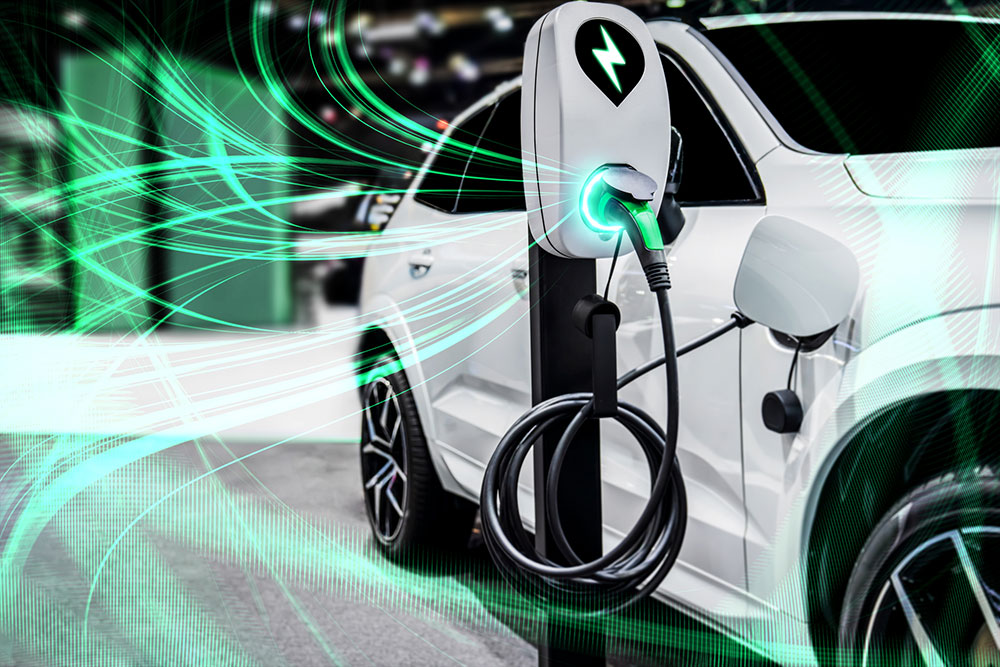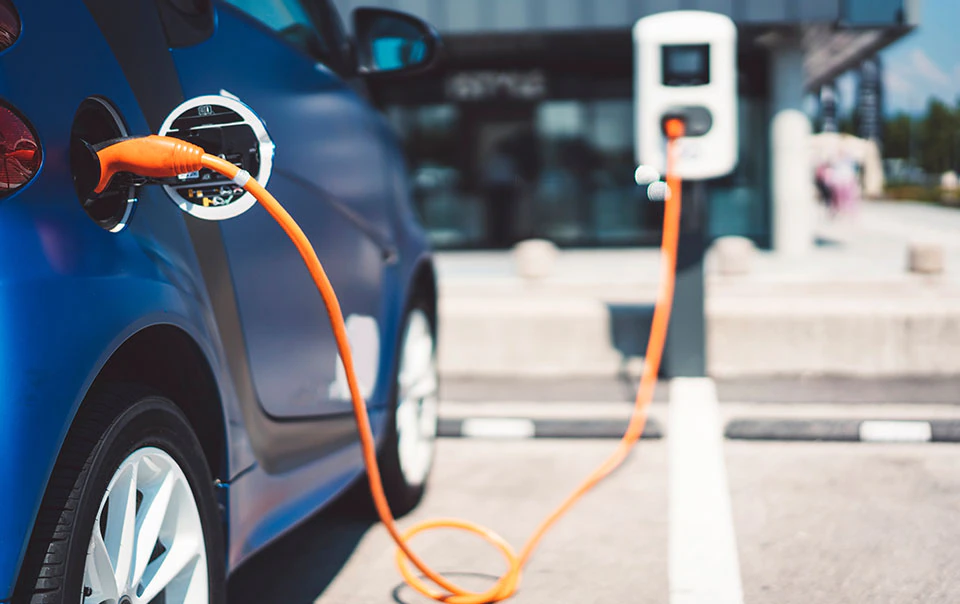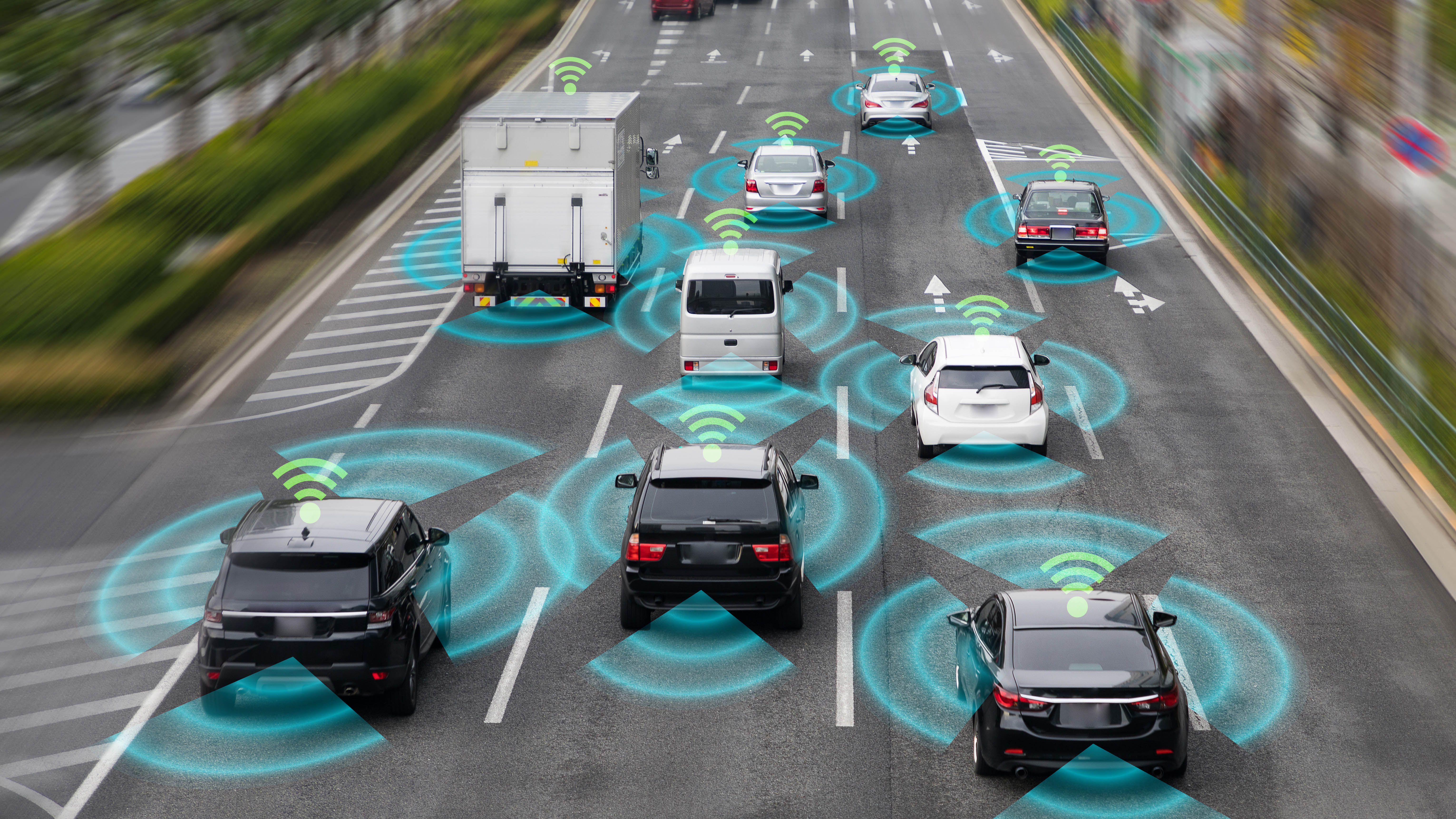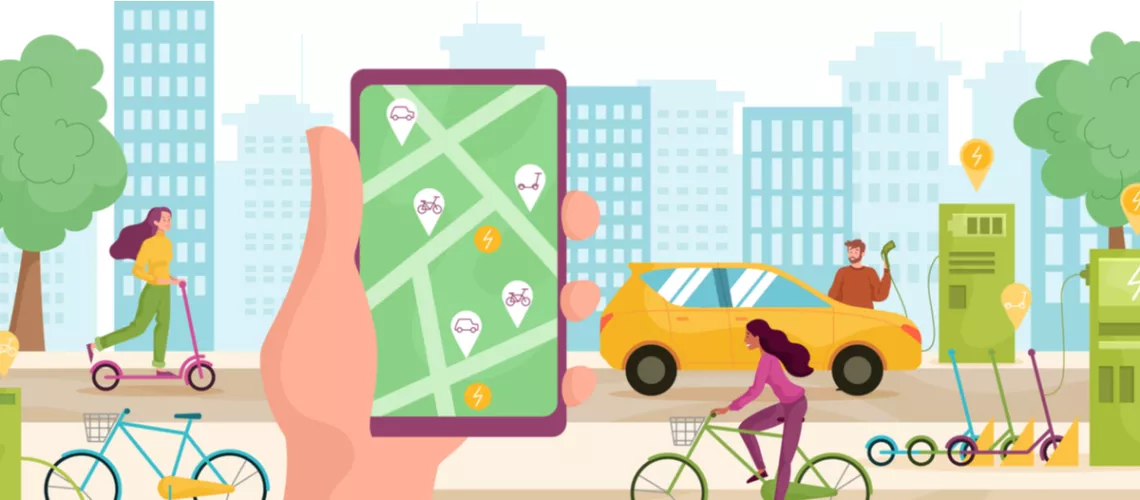Breakthrough Car Tech - Innovations Transforming Your Drive
The landscape of automotive technology has undergone a seismic shift in recent years, with innovations that not only enhance the driving experience but also promise a more sustainable and interconnected future. The breakthrough car techhas been rapid, moving from simple mechanical devices to complex systems that integrate software, sensors, and advanced materials. This transformation has had a profound impact on car users, tech enthusiasts, redefining what it means to drive and interact with vehicles.
The Evolution Of Car Technology
From the early days of the internal combustion engine to the latest electric powertrains, car technology has always been a hotbed of innovation. The journey has been marked by milestones such as the introduction of safety features like seat belts and airbags, the adoption of fuel injection systems, and the rise of in-car entertainment. Today, we stand at the brink of a new era where cars are not just modes of transport but sophisticated machines capable of learning, adapting, and even driving themselves.
Impact On Car Users, Tech Enthusiasts
The advancements in automotive technology have had a significant impact on various groups:
- Car Users: Modern cars offer enhanced safety, comfort, and efficiency, making the driving experience more enjoyable and convenient. Features like parking assistance, lane-keeping systems, and adaptive cruise control have taken the stress out of driving.
- Tech Enthusiasts: For those passionate about technology, cars have become a platform for experiencing the latest advancements firsthand. From electric powertrains that deliver instant torque to digital dashboards that provide a wealth of information, the modern car is a tech enthusiast's dream.
The convergence of these technologies not only enhances the driving experience but also opens up new possibilities for how we interact with our vehicles. As we continue to explore the breakthrough car tech, we will delve deeper into specific areas such as electrification, connectivity, autonomous driving, and the future of car ownership, all of which are set to transform your drive in ways you never imagined.
Electrification And Sustainable Driving
The automotive industry is undergoing a significant transformation, with electrification and sustainable driving at the forefront of this change. As concerns about environmental impact and the depletion of fossil fuels grow, car manufacturers are rapidly shifting their focus towards electric vehicle (EV) technology. This shift is not only a response to environmental pressures but also a nod to the increasing demand from consumers for cleaner, more efficient vehicles.
Advancements In Electric Vehicle (EV) Technology
Electric vehicles have come a long way since their inception. Modern EVs boast impressive ranges, reduced charging times, and enhanced performance that rival their internal combustion engine counterparts. Innovations such as lithium-ion batteries with higher energy densities and the development of solid-state batteries are paving the way for cars that can travel further on a single charge. Moreover, regenerative braking systems have become more sophisticated, allowing EVs to recover energy during deceleration, further improving their efficiency.
The Rise Of Hybrid And Electric Cars
The market for hybrid and electric cars is expanding rapidly. Hybrid vehicles, which combine a traditional engine with an electric motor, offer a stepping stone for many consumers who are not yet ready to commit to a fully electric vehicle. On the other hand, all-electric cars are gaining popularity due to their lower running costs, tax incentives, and exemption from certain emission-based restrictions in urban areas.
The variety of models available has also increased, with options ranging from compact city cars to luxury SUVs. This diversity ensures that there is an electric or hybrid vehicle to suit the needs and preferences of nearly every car user.
Government Incentives And Infrastructure Development
Governments around the world are playing a crucial role in accelerating the adoption of electric vehicles. Incentives such as tax rebates, grants for new purchases, and exemptions from congestion charges are making EVs more financially attractive. In addition, significant investments are being made in charging infrastructure to alleviate range anxiety and make electric vehicles a practical option for everyday use.
Countries are rolling out plans to expand the network of public charging stations, with some aiming to provide ultra-fast charging that can add hundreds of kilometres of range in just minutes. This expansion is not only limited to urban areas but also includes highways and rural regions, ensuring that EV drivers can confidently travel long distances.
The push towards electrification and sustainable driving is not a fleeting trend but a fundamental shift in the automotive industry. As technology continues to advance and the infrastructure to support electric vehicles expands, we can expect to see an even greater uptake of EVs and hybrids. This transition promises a cleaner, more efficient future for car users, and it's an exciting time for tech enthusiasts and environmentally conscious drivers alike.
Connectivity And Infotainment
The automotive industry is rapidly evolving, and one of the most exciting areas of development is the integration of connectivity and infotainment systems within vehicles. These systems are not just about providing entertainment; they are transforming the driving experience by enhancing communication, navigation, and vehicle functionality.
The Role Of 5G And IoT In Connected Vehicles
The advent of 5G technology is set to revolutionize the way cars connect with the world. With its high-speed data transfer and reduced latency, 5G enables vehicles to communicate with each other, with traffic infrastructure, and with the broader internet at unprecedented speeds. This connectivity is a cornerstone of the Internet of Things (IoT), where devices of all kinds, including cars, are interconnected and exchanging data.
Here's how 5G and IoT are enhancing car technology:
- Real-time traffic updates: Cars can receive up-to-the-minute information on traffic conditions, helping drivers avoid congestion.
- Enhanced navigation: With faster data speeds, maps and routes can update in real-time, providing the most efficient journey.
- Vehicle-to-everything communication (V2X): Cars can communicate with traffic signals, pedestrian crossings, and even other vehicles to improve safety and traffic flow.
- Remote vehicle monitoring: Owners can check on their vehicle's status, such as fuel levels or battery charge, from their smartphones.
In-Vehicle Infotainment Systems And Their Future
Modern vehicles come equipped with advanced infotainment systems, providing a myriad of functionalities ranging from streaming music to delivering navigation assistance. These systems are continually evolving, incorporating features like expansive touchscreens, voice control, and even gesture recognition as standard components. For more insights into the latest developments in automotive technology, visit this resourcefrom Gadgets Gaadi.
The future of in-vehicle infotainment includes:
- Integration with personal devices: Seamless connection with smartphones and tablets, allowing users to access their personal media and apps through the car's system.
- Customizable interfaces: Drivers and passengers can personalize the infotainment experience, much like they do with their mobile devices.
- Advanced voice assistants: Enhanced voice control capabilities that understand natural language and can perform complex tasks.
- Augmented reality (AR) displays: Combining real-world views with digital information, AR can project navigation directions onto the windshield, reducing the need to look away from the road.
Enhanced Driver Experience Through Connectivity
Connectivity is not just about the technology; it's about the experience it provides to the driver and passengers. With connected features, the journey becomes more than just getting from point A to point B; it becomes an opportunity for entertainment, learning, and productivity.
Here are some ways connectivity is enhancing the driver experience:
- Entertainment on the go: Access to streaming services for music, podcasts, and videos keeps passengers entertained during long trips.
- Stay connected: In-car Wi-Fi hotspots allow passengers to stay connected to the internet for work or play.
- Smartphone integration: Features like Apple CarPlay and Android Auto let drivers safely use their phone's features, such as sending messages or making calls, through the car's system.
- Convenience features: From finding a parking spot to scheduling service appointments, connected services add a layer of convenience to car ownership.
The integration of connectivity and infotainment systems in vehicles is not just a trend; it's a fundamental shift in how we interact with our cars. As these technologies continue to advance, they will offer even more personalized, convenient, and enjoyable driving experiences, making every journey a pleasure for car users, tech enthusiasts.
Autonomous And Assisted Driving
The automotive industry is on the brink of a revolution with the advent of autonomous and assisted driving technologies. These innovations are not just changing the way we drive but are also enhancing road safety and offering new possibilities for entertainment, including in the realm of gaming.
Levels Of Driving Automation And Current Capabilities
Driving automation is categorized into different levels, from 0 to 5, with 5 representing full automation. Here's a quick overview:
- Level 0: No Automation. The driver performs all driving tasks.
- Level 1: Driver Assistance. The vehicle can control either steering or acceleration/deceleration with features like cruise control.
- Level 2: Partial Automation. The car can control both steering and acceleration/deceleration under certain conditions, but the driver must remain engaged.
- Level 3: Conditional Automation. The vehicle can perform all driving tasks under certain conditions, but the driver must be ready to take control when needed.
- Level 4: High Automation. The car can perform all driving tasks and monitor the environment in certain areas or conditions without human intervention.
- Level 5: Full Automation. No driver is required at any time, and the vehicle is fully autonomous in all conditions.
Currently, most commercially available cars are equipped with Level 2 automation features. These include lane-keeping assist, adaptive cruise control, and parking assistance. Some manufacturers are testing Level 3 technologies, but widespread adoption is still a few years away.
Advanced Driver Assistance Systems (ADAS) And Safety
Advanced Driver Assistance Systems(ADAS) are the building blocks of autonomous driving. These systems use a combination of sensors, cameras, and artificial intelligence to assist the driver and prevent accidents. Key ADAS features include:
- Automatic Emergency Braking: Detects an impending collision and applies the brakes if the driver fails to respond.
- Lane Departure Warning: Alerts the driver when the vehicle begins to drift out of its lane.
- Blind Spot Detection: Monitors the blind spots around the vehicle and warns the driver of unseen vehicles.
- Traffic Sign Recognition: Reads and interprets traffic signs, keeping the driver informed of speed limits and other important information.
These systems not only make driving safer but also reduce the stress associated with long drives and complex traffic situations.
The Future Of Car Ownership And Mobility
The landscape of car ownership is undergoing a seismic shift, driven by the relentless march of technology. As we peer into the horizon of automotive innovation, it's clear that the traditional model of owning a vehicle is being challenged by new, tech-driven mobility solutions.
Mobility-as-a-Service (MaaS) And Its Growth
Mobility-as-a-Service, or MaaS, is a revolutionary concept that integrates various forms of transport services into a single, accessible platform. This approach offers a tailored mobility package based on individual needs, combining options like car-sharing, ride-hailing, public transport, and bike-sharing.
The growth of MaaS is fuelled by advancements in technology, particularly in the realms of smartphone apps and big data analytics. These technologies enable service providers to offer real-time information, seamless payment options, and personalised travel suggestions, making transportation more efficient and user-friendly.
The Shift Towards Subscription And Shared Mobility Models
The concept of car ownership is being redefined by the emergence of subscription and shared mobility models. These models offer flexibility and affordability, particularly appealing to the younger generation who prioritise access over ownership.
- Subscription servicesallow users to access a range of vehicles for a monthly fee, covering insurance, maintenance, and roadside assistance. This model removes the long-term commitment and financial burden associated with purchasing a car.
- Car-sharing serviceshave also gained traction, providing the convenience of a car without the costs and responsibilities of ownership. Users can rent a car for short periods, often by the hour, which is ideal for those who drive infrequently.
How Technology Is Reshaping The Concept Of Car Ownership
Technology is not just altering how we drive but also how we think about car ownership. With the integration of smart contracts and blockchain technology, new platforms are emerging that enable peer-to-peer car rental and shared ownership schemes. These platforms ensure secure transactions and transparency, fostering trust among users.
Moreover, the rise of autonomous vehicles could further diminish the appeal of owning a car. Once self-driving cars become mainstream, the convenience of summoning a vehicle whenever and wherever could make the idea of parking a car in your garage seem outdated.
Breakthrough Car Tech - FAQs
What Is The Latest Technology In Automobile?
Some notable trends are:
- Electric Vehicles (EVs):The development and adoption of electric vehicles with advanced battery technology.
- Autonomous Driving:Advancements in self-driving technology for enhanced safety and convenience.
- Connected Vehicles:Integration of IoT (Internet of Things) for improved connectivity and data exchange.
- Advanced Driver Assistance Systems (ADAS):Features like lane-keeping assistance, adaptive cruise control, and automatic emergency braking.
- Augmented Reality (AR) in Head-Up Displays:Utilizing AR for enhanced navigation and driving information.
What Is The Future Of BEVs?
he future of Battery Electric Vehicles (BEVs) looks promising, with an increasing focus on sustainability and reducing carbon emissions. Key trends include:
- Improved Battery Technology:Advances in battery chemistry and energy density for longer ranges and faster charging.
- Increased Model Availability:More automakers are investing in and releasing a broader range of electric vehicle models.
- Charging Infrastructure Development:Expansion of charging networks to support the growing number of electric vehicles.
- Government Policies:Continued support and incentives from governments worldwide to encourage the adoption of electric vehicles.
What Is Toyota's Future Plan?
Toyota has been actively involved in various initiatives related to sustainability and advanced automotive technologies. Some key aspects of Toyota's future plans include:
- Hybrid and Hydrogen Technology:Toyotahas been a pioneer in hybrid technology (e.g., Prius) and hydrogen fuel cell technology (e.g., Mirai).
- Electric Vehicles:While initially focusing on hybrids, Toyota has also expressed plans to expand its electric vehicle lineup, aiming for carbon neutrality by 2050.
- Autonomous Driving:Like many other automakers, Toyota has been investing in autonomous driving research and development.
Conclusion
As we navigate through these transformative times, it's evident that the very essence of what it means to 'own' a car is evolving. The convergence of technology and mobility is crafting a new narrative for the automotive industry, one where convenience, sustainability, and innovation take the driver's seat. The road ahead promises to be an exciting journey, steering us towards a future where technology not only powers our vehicles but also redefines our relationship with them.




